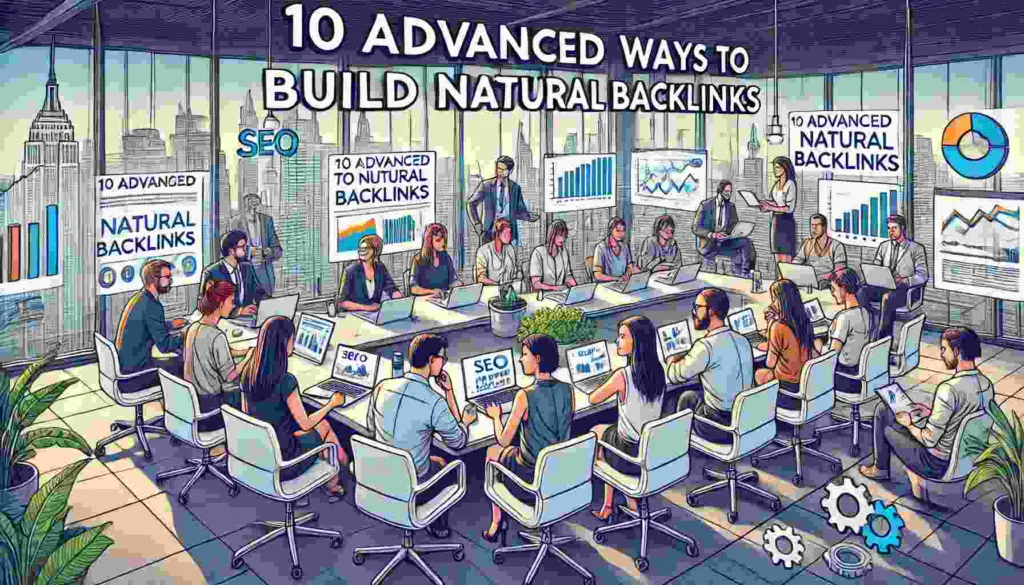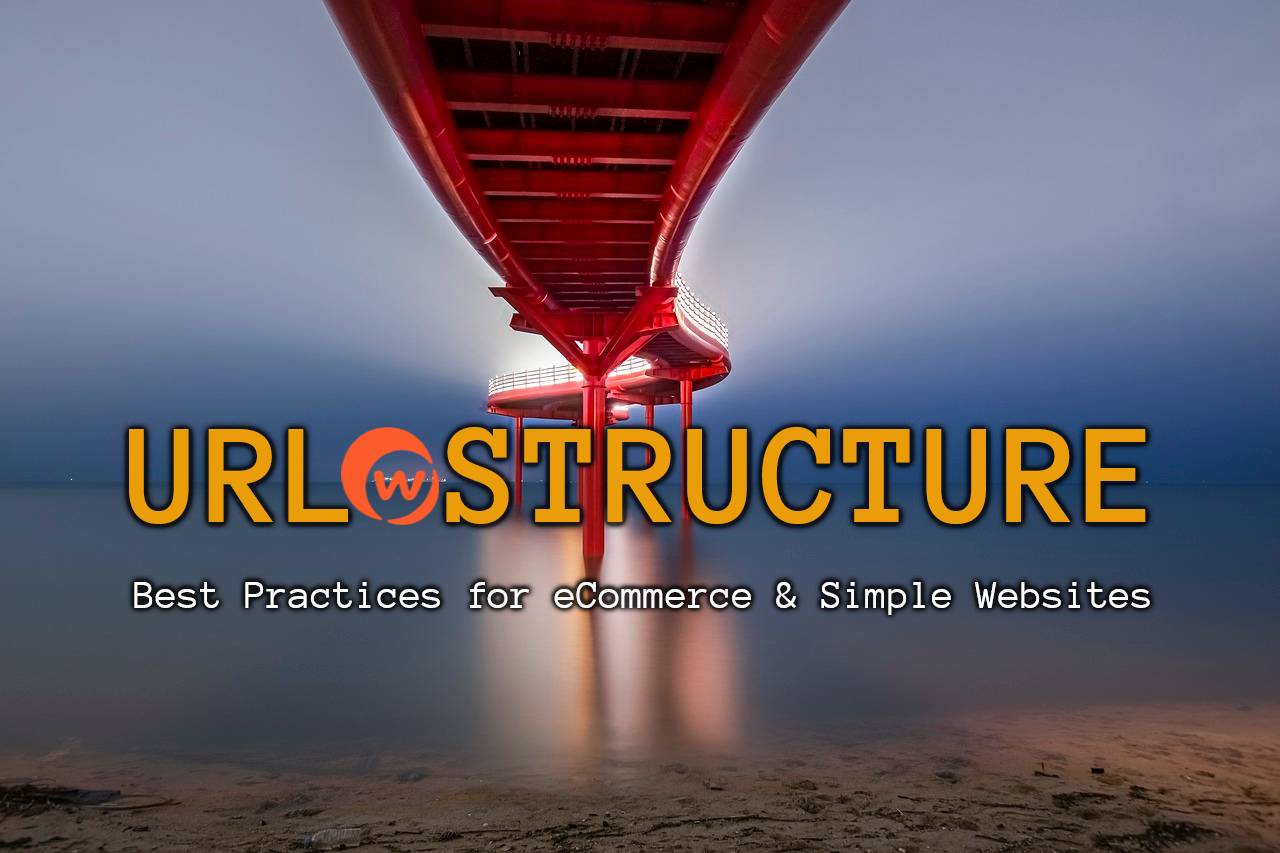Stand Out from the Crowd with Creative Approaches
- 10 Advanced Ways to Build Natural Backlinks
- 1. Content Creation with Unique Angles
- 2. Guest Posting with Case Studies and Collaboration
- Want To Increase Traffic & Sales With SEO?
- 3. Social Media Events and “Shareable” Moments
- 4. “Micro-Community” Participation
- 5. Curated Directory-Like Pages (Instead of Standard Directory Submissions)
- 6. Newsworthy Press Releases via “Data or Trend Insights”
- 7. Strategic Partnerships Instead of Basic Link Exchanges
- 8. Leveraging Testimonials and Influencer Spotlights
- 9. Become a Go-To “Resource” (Beyond Simple Resource Pages)
- 10. Broken Link Building + Content Repositioning
- Putting It All Together

Searching for an unique backlink strategies for websites in 2025? By concentrating on user-generated content, data-driven articles, interactive content, and micro-niche material, I also think about eschewing traditional SEO backlink development techniques. This method distinguishes these tactics by presenting fresh and powerful perspectives.
Here’s a detailed look at how you might innovate and enhance common backlink building procedures. You can approach the fundamentals in more creative ways to stand out and obtain higher-quality backlinks, even though they frequently stay the same (because they have been shown to be effective).
Follow these steps to add a fresh twist to each classic tactic.
10 Advanced Ways to Build Natural Backlinks
- Content Creation with Unique Angles
- Guest Posting with Case Studies and Collaboration
- Social Media Events and “Shareable” Moments
- “Micro-Community” Participation
- Curated Directory-Like Pages (Instead of Standard Directory Submissions)
- Newsworthy Press Releases via “Data or Trend Insights
- Strategic Partnerships Instead of Basic Link Exchanges
- Leveraging Testimonials and Influencer Spotlights
- Become a Go-To “Resource” (Beyond Simple Resource Pages)
- Broken Link Building + Content Repositioning
1. Content Creation with Unique Angles
Traditional Approach:
- Write blog posts, infographics, eBooks, and videos.
- Provide generally useful information and hope it earns backlinks organically.
Innovative Twist:
- Publish Original Data and Research: Perform your own surveys or compile data that hasn’t been released by anyone yet. This immediately increases trust and promotes organic backlinks from people who are referencing your exclusive info.
- Create Interactive Content:Create interactive charts or calculators as an alternative to a simple infographic. A “ROI Calculator for Email Marketing,” for instance, can draw backlinks from sites that address marketing ROI.
- Focus on Visual Storytelling: Create animated infographics or brief documentaries instead of just still photos. These are easier to share and may be included on other websites to generate backlinks.
Example: You may carry out a little study on the effects of different diets on energy levels if you manage a website on health and fitness. Your study may be linked back to by industry bloggers or health news websites when you post your findings (graphs, tables, and data points).
2. Guest Posting with Case Studies and Collaboration
Traditional Approach:
- Pitch article ideas to blogs in your niche, including a link back to your site within the content or author bio.
Innovative Twist:
- Leverage Case Studies: Share specific outcomes from a campaign or experiment you conducted rather than a generic guest post. Guest articles with data are far more enticing and have a higher chance of landing on reputable websites.
- Collaborative Content: Co-author a post with an influencer in your industry, then have it published on a reputable site. Both parties share the content widely, generating more buzz and backlinks.
For example, you may oversee a digital marketing company that conducted an A/B test for a client’s advertising campaign. Use the results and insights to write a guest post for a reputable marketing website. Showcase real data, images, and your strategy to provide something unique.
3. Social Media Events and “Shareable” Moments
Traditional Approach:
- Post links to your content on social media platforms, engage with comments, and hope people share.
Innovative Twist:
- Host Live Events or Challenges: For instance, a 7-day Instagram challenge that encourages user-generated content. People who participate often link back to the challenge instructions on your site.
- Leverage Twitter Threads or LinkedIn Articles: Write a mini-blog or thread summarizing a complex topic. Tease your main content and direct readers to your site for the “full story.”
- Platform-Specific Giveaways: Offer freebies, trial memberships, or eBook downloads in exchange for social shares and mentions. This can indirectly drive backlinks from participants who blog about your giveaway.
Example: Start a “10-Day Healthy Eating Challenge” on Instagram if you have a culinary blog. For further information and meal ideas, users may write blogs about their experiences that include links to your original challenge page.
4. “Micro-Community” Participation
Traditional Approach:
- Answer questions on Reddit, Quora, or niche forums, dropping a link to your site when relevant.
Innovative Twist:
- Create Your Own Sub-Community: Instead of just participating, start your own thread or community group dedicated to niche discussions. As the founder or admin, your link has inherent credibility.
- Do AMA (Ask Me Anything) Sessions: Offer your expertise publicly. People often cite these Q&A sessions in blog posts and articles, generating backlinks for you.
- Set Up a “Community Resource” Page: Encourage members in your forum or group to share resources. You can then highlight these resources on your website, and many of those contributors will link back to your page where they’re featured.
Example: Organise a monthly live Q&A session in a specialised subreddit if you are an expert in cybersecurity. Natural backlinks from others citing your knowledgeable responses might result from the community summarising or mentioning your AMA (with a link to your website or profile).
5. Curated Directory-Like Pages (Instead of Standard Directory Submissions)
Traditional Approach:
- Find relevant directories in your niche, fill out a submission form, and wait for approval.
Innovative Twist:
- Become a Curator: Build your own curated list of high-quality resources, tools, or service providers in your niche. List your own site among them, and invite others to submit their sites. This approach inverts the directory concept and makes you the gatekeeper.
- Segment By Micro-Niche: If directories are oversaturated, focus on ultra-specific niches (e.g., “Top Vegan Bakeries in Northern California” instead of “Top Restaurants in the US”).
Example: Make a well researched list titled “Top 20 Sustainable Packaging Startups” if your website sells environmentally friendly packaging. You draw in other entrepreneurs that could share or hyperlink to your well crafted website as a resource in addition to listing your own brand.
6. Newsworthy Press Releases via “Data or Trend Insights”
Traditional Approach:
- Write a press release about a new product, service, or company milestone. Distribute via a newswire.
Innovative Twist:
- Offer Industry Statistics: Data that highlights current trends is highly valued by journalists. Compile pertinent data and use a catchy heading, such as “75% of Small Businesses Plan to Go Fully Remote by 2030,” to construct your press release.
- Tie Into a Current Event: Post a press release with your professional analysis or distinct viewpoint whenever a significant story in your field makes the news. Getting backlinks from blogs and news sources can be accomplished quickly via “newsjacking.”
Example: Let’s say your business sells software for managing remote teams. After gathering information on burnout and productivity from a study of 500 remote teams, you may publish a press release with the most important findings. These tales are frequently picked up by trade journals, which cite you as the original author.
7. Strategic Partnerships Instead of Basic Link Exchanges
Traditional Approach:
- Reach out to complementary businesses and swap links on each other’s blogs or partner pages.
Innovative Twist:
- Co-Create Content: Partner with another brand to produce a report, webinar, or a mini-conference. When both parties promote the event or resource, each one receives valuable backlinks from the other’s audience.
- Multi-Partner Roundups: Invite multiple non-competing brands to contribute insights to a “2025 Industry Trends” article. Everyone involved shares the article, likely linking to your original page.
Example: A graphic design company and a marketing agency work together to create a webinar on “Visual Branding for 2025.” Each links back to the joint registration page hosted on your website as they advertise the event on their websites and in their email lists.
8. Leveraging Testimonials and Influencer Spotlights
Traditional Approach:
- Provide testimonials to service providers you’ve used. They link back to you as the person/company endorsing them.
Innovative Twist:
- Video Testimonial Series: Offer to appear in short video testimonials instead of plain text. Video content is more engaging, and businesses will be more inclined to feature (and link to) your brand.
- Influencer Spotlight Reviews: Flip the concept—invite influencers or notable customers to review your products/services on your platform. These influencers will often link to their spotlight, driving referral traffic and backlinks.
Example: You are a software business with a happy, well-known customer. Make a “Case Study Spotlight” video that highlights their accomplishments. This case study may be shared or embedded on the client’s website, with a link to your original video or article.
9. Become a Go-To “Resource” (Beyond Simple Resource Pages)
Traditional Approach:
- Pitch your content to webmasters who maintain resource pages and ask them to include you.
Innovative Twist:
- Create Guides That Solve Real Problems: Instead of short blog posts, craft definitive guides that truly address a complex industry issue. Make them visually appealing and easy to navigate, so they’re reference-worthy.
- Interactive Tool Hub: Build a collection of free tools or templates (e.g., spreadsheet templates, ROI calculators, timeline planners) that people will want to link to because they’re genuinely helpful.
Example: If you run a project management blog, compile a massive library of free templates for Gantt charts, budgets, and timelines. Industry educators and bloggers frequently link to comprehensive tools that solve their readers’ problems.
10. Broken Link Building + Content Repositioning
Traditional Approach:
- Find broken links on websites. Suggest replacing them with your live page on a similar topic.
Innovative Twist:
- Revamp Old Content: Think about revising or reusing your material to directly match what the site owner lost, even if the broken link is comparable. This extra work demonstrates your sincerity in assisting them in improving their user experience.
- Offer Multiple Solutions: Don’t merely share your link. To demonstrate objectivity and good faith, offer a few substitutes (including your link). Higher acceptance rates are frequently the outcome of this strategy.
Example: During a broken link outreach, you discover a blog referencing outdated social media stats from 2019. You can create an updated 2025 version, highlight the new data, and suggest your link as a replacement. Emphasize you’ve improved the resource to keep their article fresh and valuable.
Putting It All Together
- Start with Unique Content: Create data-driven or interactive resources that stand out in your niche.
- Guest Post with Depth: Prioritize case studies, collaborative content, or real-world experiments.
- Supercharge Social Media: Leverage challenges, live events, or platform-specific threads for shareable moments.
- Engage and Build Micro-Communities: Either start your own or become a recognized authority in existing ones.
- Be the Curator: Don’t just submit to directories—create your own specialized resource lists.
- Newsjack with Press Releases: Provide fresh data or expert commentary on trending topics to attract media backlinks.
- Pursue Meaningful Partnerships: Go beyond basic link swapping and co-create content with complementary brands.
- Influencer Spotlights: Offer or receive testimonials in creative formats like video or collaborative reviews.
- Resource Hubs: Develop comprehensive, interactive guides and toolkits that people find indispensable.
- Advance Broken Link Building: Tailor or update your content to perfectly fit the gap you’re helping to fill.
You can transform straightforward backlink development into a relationship-driven, high-impact tactic by rethinking these tried-and-true methods. Your metamorphosis will undoubtedly increase the authenticity of your communications, the appeal of your content, and the value of your backlinks to readers and search engines.
Share this blog:


